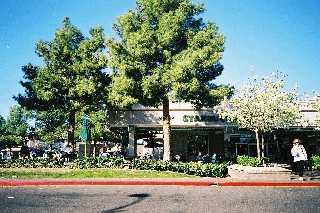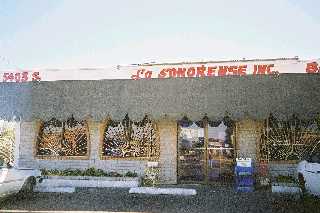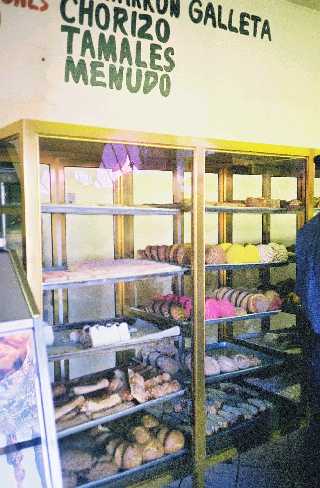Kim Gutierrez &Tracy Beian-Kirk
Learning from South Phoenix
ASB 442 Urban Anthropology
Spring 2002


Is
Starbucks a precursor to gentrification? This project began innocently
by a simple remark Tracy made one week in class “I need a Starbucks”, while
experiencing an energy low when our class was working at Habitat for Humanity
located in South Phoenix. This comment and thought made us start thinking
about where Starbucks picks its store locations in the valley. We
wondered if South Phoenix was deprived by not having a Starbucks in their
community? We decided this sounded like a good team project that we could
do together and have fun while researching for this paper.
Our
journey began on a Sunday morning at the Starbucks located in Central Phoenix
at Park Central, located at North Central Ave and Catalina Streets there
was no seating available. People were waiting to order coffee delicacies
such as, Lattes, Cappuccino, Caramel Machiattos and Iced Mochacinos. Many
people were alone reading the newspaper, talking on their cell phones and
some writing, clearly not engaged with others. The
outdoor areas were also filled with people, more groups of friends talking,
with many people alone again.
The
crowd appeared to be primarily white, with a few scattered people of color.
The feeling we experienced in this Starbucks was that of private conversations,
it did not appear that many of the crowd knew the others seated near or
around them—they seemed to only talk and acknowledge the people they were
with; an occasional simple nod of hello was forced at best.
We
already were aware that indeed there are no Starbucks in South Phoenix,
so we set out on a quest to find out if South Phoenix has any establishments
or a coffeehouse’s similar to Starbucks in Central Phoenix. We
were pointed in the direction of two local establishments, by a fellow
classmate that lives in South Phoenix, she recommended we try a local restaurant
El Mesquite, at the corner of Baseline and Central and La Sonorese, a bakery
located on Central Avenue. They were the closest parallels we could find
to coffeehouses in South Phoenix. In contrast to Starbucks our experiences
at these local places were amazing. These
establishments were different, very family and friend oriented—they had
an energy that was hospitable. The
people within the boundaries of the restaurant were warm, friendly and
welcoming. It was obvious that the
people in this crowd were made up of regulars who visited this local place
often. 
The
waitresses were happy to greet each patron as if they were their own family. Our
waitress, Dora recognized Kim as if she were an old friend; having only
dined there three times, Kim felt welcomed and comfortable. Yet she was
totally amazed that the waitress remembered her and that our waitress remembered
personal information and asked Kim about it. Wow!
I cannot imagine this happening at Starbucks after two visits. As we ate
our fabulous breakfast, drinking our coffee we both remarked it was like
being on vacation. The Mexican musica blaring in the background just added
more culture and warmth to this restaurant. We
felt like we fit in and were completely satiated when we left. On
our way out the door one of the waitresses said, “see you next week.”
La
Sonorese is a family bakery that has been in its current location for 16
years. The pastries and tortillas
are fresh and totally delicious. While
we were trying to figure out what kind of empanadas to buy a line formed
behind us. Within five minutes over
10 people came in to purchase their morning tortillas and pastries—similar
to Starbucks. But no one stayed
to enjoy their purchases at La Sonorese, they took them with them obviously
to be enjoyed in another place.
Now
that we have experienced South Phoenix on a Sunday morning we hope that
Starbucks “never” moves into the neighborhood. The culture that
Starbucks attracts is not truly a sense of family or locals. It
attracts a group of people who want to feel as though they are engaged
in a community without really ever being a part of it. We
do not want to see the warm, friendly and welcoming establishments like
El Mesquite and La Sonorese disappear just because Starbucks moves in and
changes the cultural landscape of the community. We must also mention the
difference here is that it is not about the coffee it is about people.